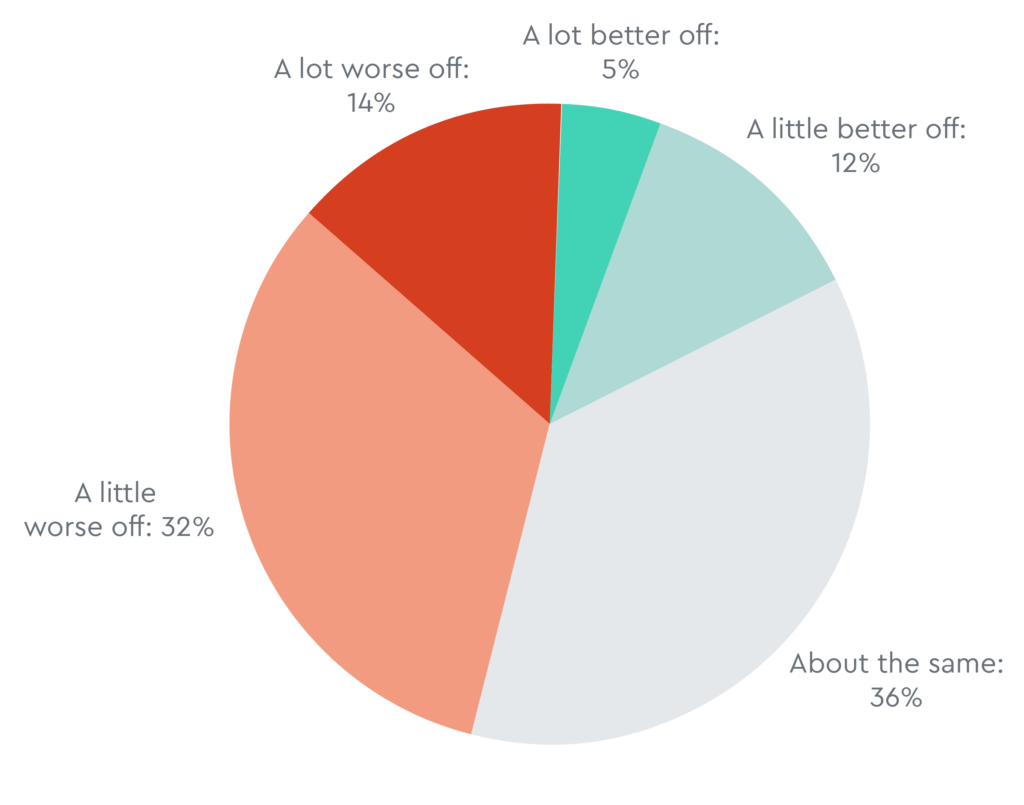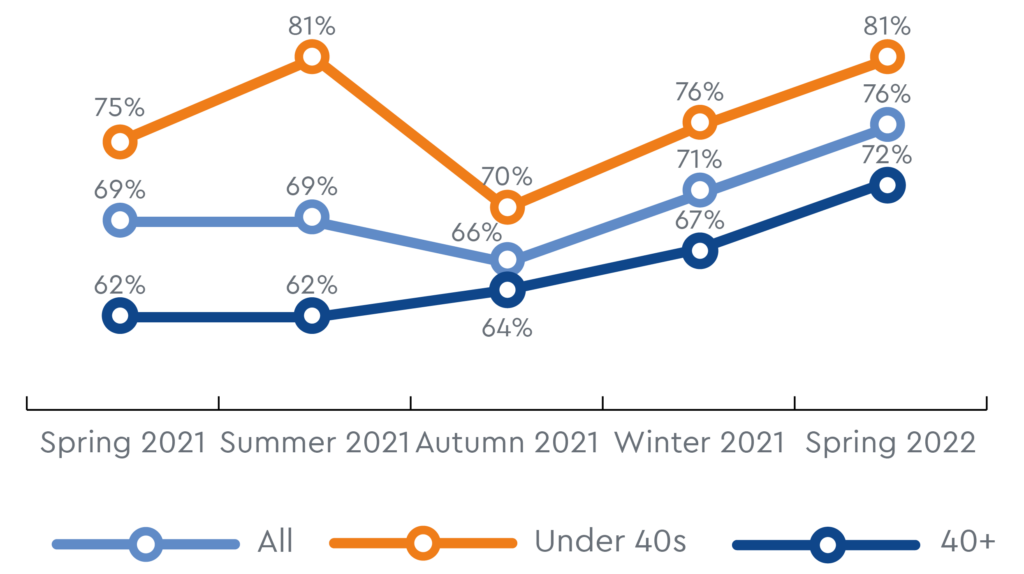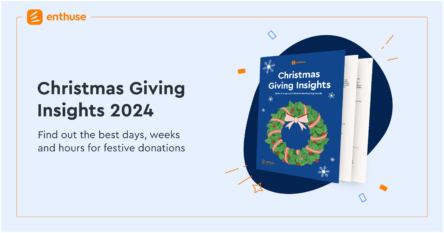
The latest edition of our quarterly Donor Pulse research examines the impact of the cost of living crisis and how that knock-on effect could lead to a ‘cost of giving’ crisis, with people finding it harder to donate. The report also covers key donor tracking insights, such as online giving and fundraising events – both of which show signs of promise for the coming months.
Before we dive into the key findings from this quarter’s research, it’s worth saying that everyone at Enthuse has been horrified by Putin’s attack on Ukraine. At times like these it’s great to see the brilliant work charities are doing to help and at Enthuse we will do everything we can to support those efforts. The speed of the full-scale invasion means the majority of this research was carried out before it started, so there is little mention of it in the report. There is no doubt that the public’s generosity towards Ukraine will be clearly seen in the next edition of the report however.
The cost of giving
Nearly half (46%) of people say they are worse off financially than six months ago. The increase in the price of groceries, fuel and energy could also impact the charity sector and create a ‘cost of giving’ crisis, with 53% of the public stating that their financial situation makes it harder to donate.
The acceleration of the cost of living has hit the finances of all age groups. Gen Z is the best placed in that it has had mixed fortunes with around a third (36%) feeling better off and the same amount feeling worse off. Other age groups have had a much harder time of it, with half of Gen X stating they are worse off and more than half (53%) of Baby Boomers saying the same.
There is a strong correlation between the 46% of people who find themselves in a worse financial position and the 53% finding it harder to donate. While 38% say their ability to give is about the same, a mere 1 in 10 state that they would find it easier to donate than six months ago.

The public’s intent on giving
Despite the economic pressures, this does not seem to be translating into a cost of giving crisis just yet. Three quarters of the public are planning to donate in the next three months. This is both an increase on the last quarter and an 8 percentage point rise on this time last year.
What’s more, 76% of the public have donated over the last three months, a record high since launching Donor Pulse. 81% of under 40s gave during the last quarter. The over 40s have also been generous in the last three months with 72% donating – the highest level for that age group since the start of the pandemic.
The number of people donating online hit a new peak over the last quarter; 45% of the public has supported a charity this way. The concept of ‘give and forget’, where people donate to charity online but forget who it was, remains more relevant than ever. 81% of donors say they remember the charity when they donate through the organisation’s site, with only 56% of people remembering the name of the charity when going through a consumer giving platform.

“It’s clear that the cost of living crisis is only just beginning and is set to impact everyone over the coming months. The encouraging news for charities is that the public’s generosity over the last quarter has been strong and the intention to give to charitable causes remains high.
People want to donate in spite of money becoming tighter. We may see the average donation size drop as the cost of giving sets in, so it’s more important than ever that charities cultivate long term supporter relationships through their own channels. Building connections with younger donors sets charities up for success beyond the short term.”
Chester Mojay-Sinclare, Enthuse Founder and CEO
Events to spring back?
Confidence in physical events has largely returned as 54% of the public say they’re happy to take part, and there is still high interest in virtual and hybrid events at 58% and 63% respectively – which means virtual participation looks set to be a permanent change. Overall, 48% of the public expect to take part in a fundraising event in the next six months and this rises to 65% for under 40s.
While there is growing confidence for getting involved with in-person events, one in five people (21%) say they are still avoiding making any major plans and a further 34% say they are not making as many plans as they used to. Covid remains the biggest reason behind this caution (55%) but it is only slightly ahead of financial concerns at 45%.
There is a marked difference in this split of concerns with age. 64% of Gen Z cite financial concerns as the biggest obstacle to planning, whereas only 22% of 65-80 year olds do. On the other hand, Covid ranks as a concern for just over a third (36%) of 18-24 year olds, it rises to 78% for 65-80 year olds.
While the worst of the pandemic seems to be over for many people, that isn’t the case for everyone and the cost of living is a growing concern.
If you’d like to get access to all of the insights from the latest Donor Pulse, you can download the full report, here.
You can also speak to a friendly Enthusiast about our fundraising or events solutions by booking a demo here.









